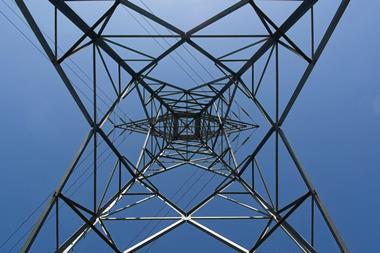
As the UK races to decarbonise its energy mix, it is often the power generation announcements promising gigawatts of new sustainable energy that make headlines. But recently, the debate has shifted subtly toward the underlying architecture that will make this transition possible. Headlines have now begun to show that renewable energy projects can wait as much as 15 years before they receive grid connections.
The revelations mean the pressure has mounted on the UK regulator, Ofgem, for risking government investments in, and legally binding targets for, renewable energy output in the UK. The issue has led to a new government mandate that requires Ofgem to prioritise net zero. It recognises a fact that the energy industry has long understood – the grid regulator cannot be a neutral party in the transition to a low carbon economy.
But Ofgem will need to be bold in its interpretation of this mandate if the regulator wants to play its part in contributing to the UK’s decarbonisation efforts, because this is not only a supply issue.
Not many people understand that up to 20% of all electricity produced is lost to resistance in cables during transmission. This coupled with the fact that much of the renewable energy produced in the UK comes from offshore wind, located off the coast of Scotland, means that as much as 2GW of energy produced offshore can be lost before it reaches the biggest demand centres in Southern England. In other words, where renewable energy is produced and how it is connected to the grid cannot be thought of as separate issues.
When renewable generation fell in 2021 by 9.3% – as power generation was hit by less favourable weather conditions, notably slower wind speeds, fewer hours of sunlight and lower rainfall – shortfalls had to be filled with natural gas. If the government is already rethinking about how it prioritises grid connectivity, then it should also reconsider where power is being generated.
Upgrading the grid: small is beautiful
In the scramble to boost the UK’s renewable energy capacity, one key question we need to ask ourselves is: how will each electron produced ultimately reach the end user? This deceptively simple question hides one of the thorniest issues facing regulators who are grappling with the transition to a low-carbon economy.
Currently, the grid is not designed for intermittent sources of energy or spikes in demand. For example, a worry over energy security saw the UK government reconsider reopening coal fire power stations to maintain power supplies during the winter. Maintaining an even supply of power to households with a predominantly renewable energy mix will require upgrades to the grid that can store, regulate and distribute energy outside of periods where power is produced.
If the UK is to meet its goal of net zero by 2050, it will not only bring online more renewable energy it will also need to decommission grid firming fossil fuel power plants. As capacity issues caused by Russia’s invasion of Ukraine show, a disruption to the energy supply could have disastrous consequences if we have a disorderly transition. To ensure that dramatic changes that the transition will bring about are not chaotic, it is imperative that these technologies are baked into any upgraded grid plans.
One of the hallmarks of the UK’s approach to bringing renewable energy capacity online has been large projects, often backed by public subsidy schemes. The effort has made the UK into one of the largest renewable energy producers in the world. However, at the same time, it has crowded out all but the largest investors from taking part in its energy transition.
This should worry regulators, particularly because it creates an uneven playing field and distorted outcomes for consumers. The government should instead be thinking about how it prioritises smaller distributed power producers that can help lower costs for consumers, while promoting a more energy-efficient grid.
Currently, the government is showing every intention of doing the opposite with a moratorium on onshore wind and it’s full-throated backing for nuclear power.


















